15 Differences Between Red Pandas And Giant Pandas

Ever wondered why two animals sharing the panda name look nothing alike? Despite their shared title, red pandas and giant pandas couldn’t be more different!
From size and diet to habitat and family trees, these adorable creatures have fascinating distinctions that make each special in their own way. Let’s explore what makes these cuddly-looking animals unique from each other.
1. Size Showdown
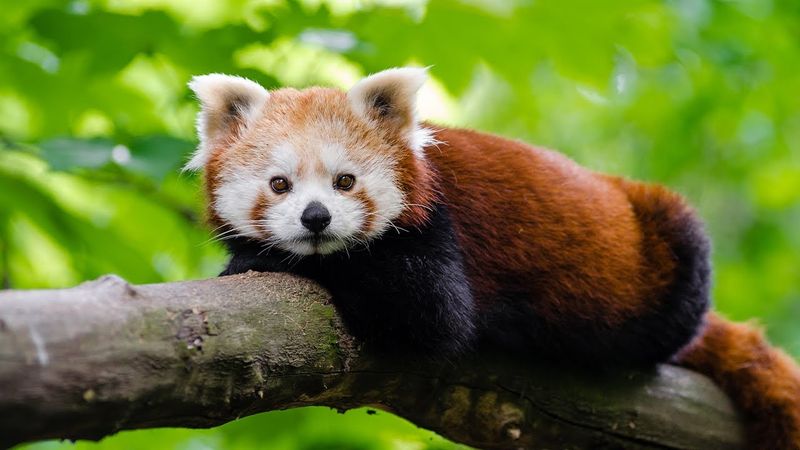
Talk about a weight class difference! Red pandas tip the scales at a mere 8-14 pounds – about the size of a house cat. They’re compact little critters with bodies reaching just 22 inches long.
Giant pandas, meanwhile, are true heavyweights at 220-330 pounds. An adult giant panda stands nearly 3 feet tall at the shoulder when on all fours, making their red cousins look like miniature toys in comparison.
2. Family Ties

Surprise! These two aren’t actually related. Red pandas belong to their own unique family, Ailuridae, and share more DNA with raccoons, weasels, and skunks than with giant pandas.
Giant pandas, despite decades of scientific debate, are officially classified as bears in the Ursidae family. Scientists finally settled this question using advanced genetic testing, confirming what many suspected all along.
3. Color Patterns

Rusty red fur gives red pandas their fiery appearance, with striking white facial markings and adorable dark “tear tracks” running down their cheeks. Their tails feature beautiful rings similar to a raccoon’s.
Giant pandas rock that iconic black-and-white color scheme we all recognize instantly. Their distinctive eye patches, ears, shoulders, and legs are black, creating a dramatic contrast against their white bodies that helps them blend into snowy, rocky habitats.
4. Bamboo Consumption
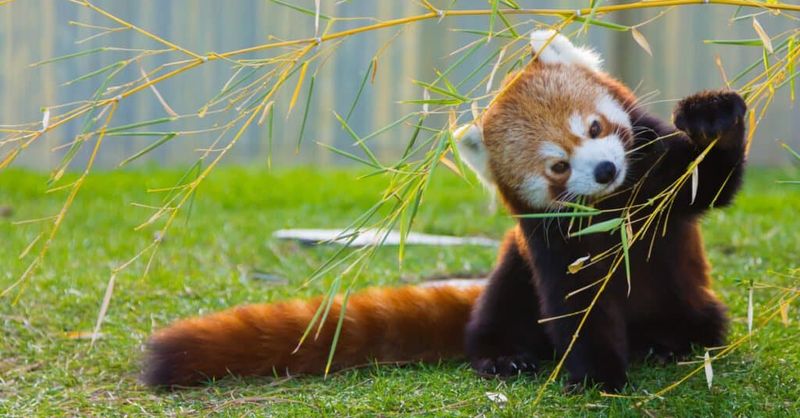
Bamboo makes up only about two-thirds of a red panda’s diet. These flexible eaters supplement with fruits, insects, bird eggs, and small lizards when available – showing their omnivorous nature.
Giant pandas are bamboo specialists, devoting 99% of their diet to the tough plant. They munch through a staggering 20-40 pounds daily, spending up to 16 hours eating! Their specialized wrist bone acts like a thumb to grip bamboo stems.
5. Tail Tales

Fluffy and fantastic! Red pandas sport long, bushy tails nearly matching their body length. These gorgeous appendages serve as cozy blankets in cold weather and perfect balancing tools when climbing.
Giant pandas have stubby, almost bear-like tails measuring just 4-6 inches long. Their short tails are barely noticeable against their massive bodies and serve little practical purpose beyond being adorably small for such large animals.
6. Climbing Abilities
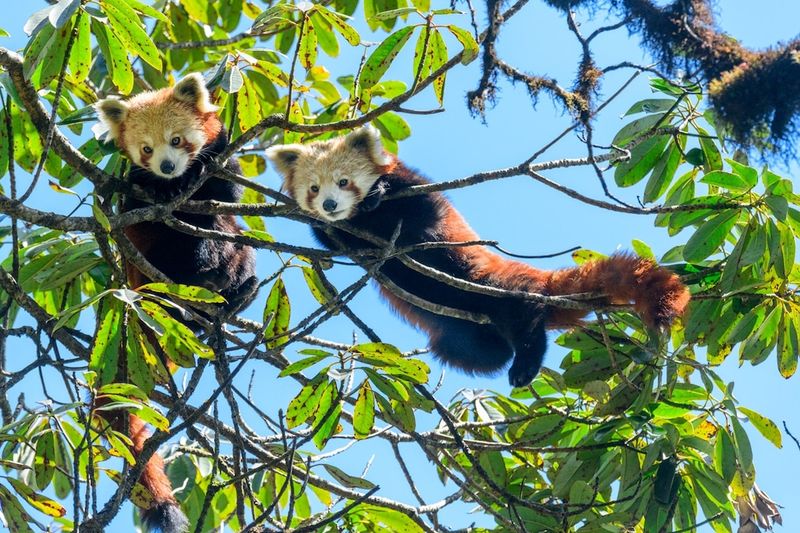
Acrobats of the forest! Red pandas spend most of their lives in trees, racing up trunks headfirst and leaping confidently between branches. Their sharp, semi-retractable claws and specialized ankles make them incredible climbers.
Giant pandas are surprisingly decent climbers as cubs but become more ground-dwelling as adults. Their massive weight limits tree-climbing adventures, though they can still haul themselves up trunks when motivated – usually to escape threats or find food.
7. Habitat Range

Mountain forests across Nepal, India, Bhutan, Myanmar, and southern China provide homes for red pandas. They thrive in temperate woodland areas with bamboo understories at elevations between 5,000-15,000 feet.
Giant pandas have a much more limited range, restricted to just six isolated mountain ranges in central China’s Sichuan, Shaanxi, and Gansu provinces. Their specialized habitat needs make them extremely vulnerable to habitat fragmentation and loss.
8. Vocal Expressions

Chirps, whistles, and squeaks fill the air when red pandas communicate! They make bird-like twitters when greeting each other and emit sharp warning calls when threatened.
Giant pandas have an impressive vocal repertoire featuring at least 11 different calls. Their signature sound is a strange bleating goat-like call, while aggressive pandas produce alarming barks and growls. During mating season, females signal readiness with distinctive chirping sounds.
9. Sleep Patterns

Crepuscular creatures by nature, red pandas become most active during dawn and dusk. They spend about 45% of their day snoozing in tree branches, curled up with their tails wrapped around themselves for warmth.
Giant pandas don’t follow strict schedules, alternating between feeding and sleeping throughout both day and night. Their unusual bamboo-heavy diet forces them to eat constantly and nap between meals, typically sleeping for 2-4 hours at a stretch.
10. Conservation Status
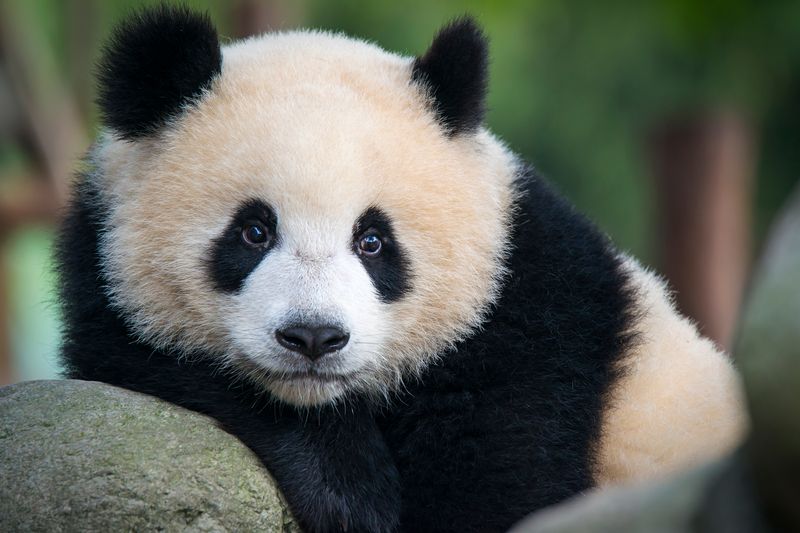
Endangered with fewer than 10,000 adults remaining, red pandas face serious threats from habitat loss, poaching for their beautiful fur, and illegal pet trade. Their population has declined by 50% in just three generations.
Giant pandas have seen conservation success, recently downgraded from endangered to vulnerable status. With approximately 1,800 wild pandas and strong breeding programs, they represent one of conservation’s biggest wins, though they still require extensive protection efforts.
11. Winter Adaptations
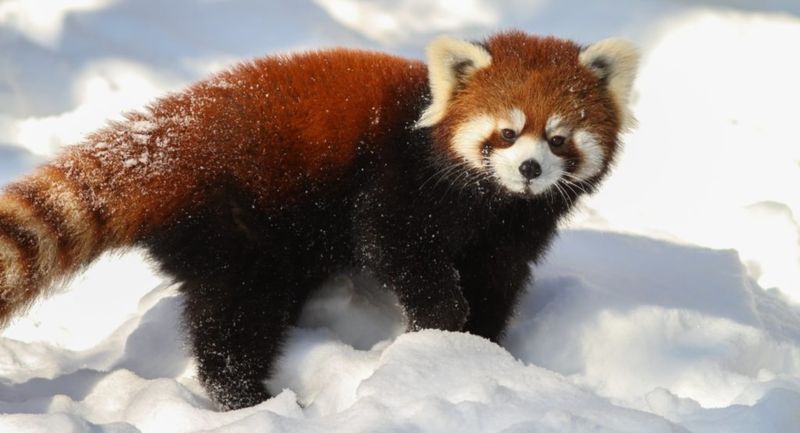
Thick fur and a dense undercoat help red pandas brave high-altitude winters. Their furry soles provide perfect insulation against snow, while their bushy tails double as cozy blankets during cold mountain nights.
Giant pandas don’t hibernate despite being bears. Their thick fur and small ears minimize heat loss in chilly bamboo forests. When winter arrives, they simply migrate to lower elevations rather than sleeping through the season like other bears.
12. Reproduction Challenges

Female red pandas are fertile for just one day each year during a brief breeding season! They typically give birth to 1-4 tiny cubs after a 114-145 day pregnancy.
Giant pandas face notorious breeding difficulties, with females fertile for only 2-3 days annually. Cubs are born remarkably underdeveloped – weighing just 3-5 ounces and measuring about 6 inches long, about 1/900th of their mother’s weight. Twins are common but mothers usually raise only one.
13. Teeth Structure
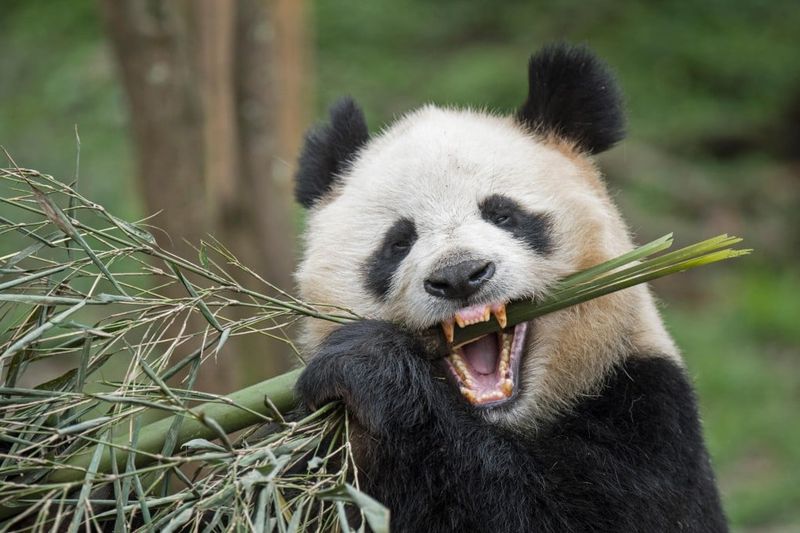
Fascinating dental work! Red pandas have specialized teeth with adapted premolars and molars perfect for processing bamboo. However, they maintain omnivore-style canines and incisors for handling diverse foods.
Giant pandas evolved remarkable flat molars and premolars that work like grinding plates to crush tough bamboo. Their powerful jaw muscles and enlarged wrist bone (pseudo-thumb) complete their specialized bamboo-processing equipment, despite having digestive systems still resembling carnivores.
14. Movement Style
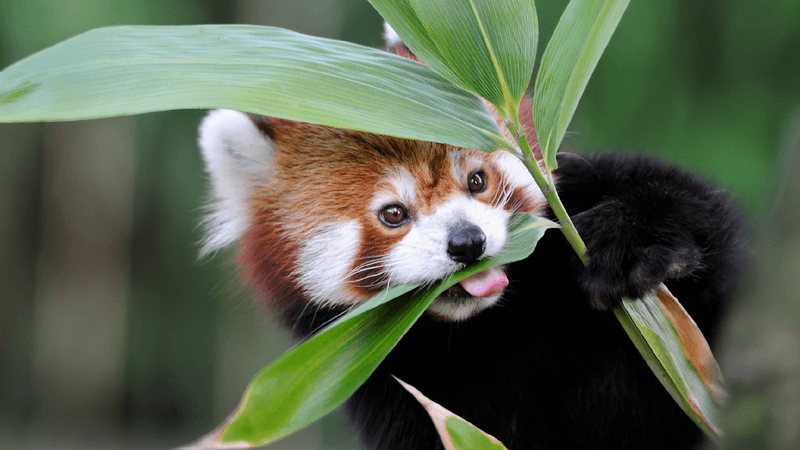
Swift and agile, red pandas move with cat-like grace through the forest canopy. On the ground, they amble with a waddling gait but can reach surprising speeds when threatened, even performing quick directional changes.
Giant pandas move with a distinctive pigeon-toed waddle due to their unique shoulder structure. Their relaxed walking pace masks surprising bursts of speed – they can sprint at 20 mph when motivated! Unlike most bears, they cannot stand upright for long periods.
15. Cultural Significance

Firefox web browser’s logo was inspired by the red panda! These charming animals appear in Nepalese folklore as “nigalya ponya” (bamboo eaters) and feature in several animated films and video games.
Giant pandas represent China internationally as beloved national treasures and diplomatic gifts. Their distinctive appearance makes them global conservation symbols, with the World Wildlife Fund adopting the panda as its iconic logo in 1961, helping transform them into worldwide conservation celebrities.






